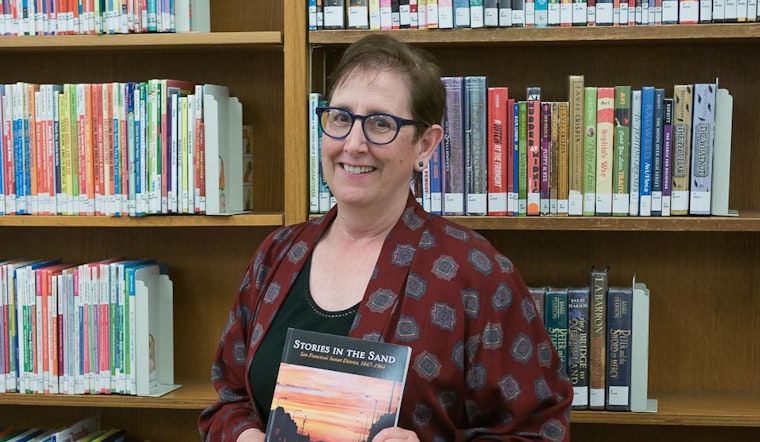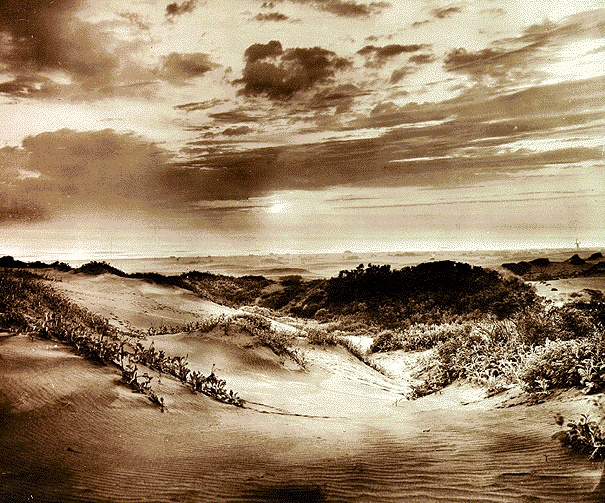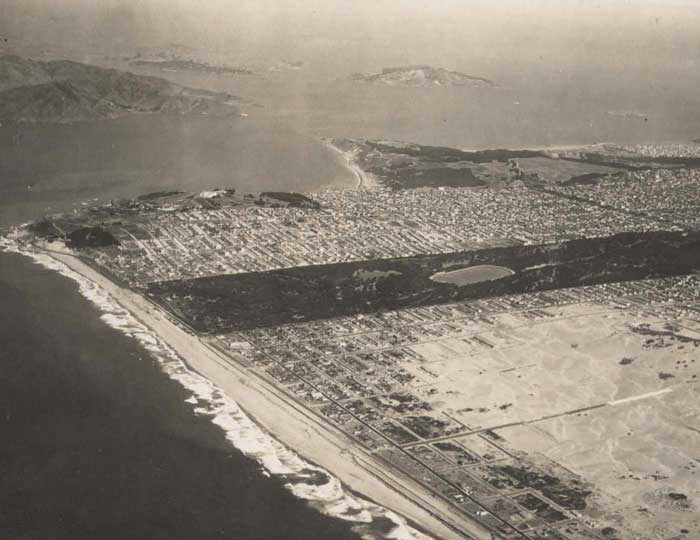
An audience of about a dozen Sunset residents gathered in the Sunset Branch library on Thursday evening to hear Lorri Ungaretti give a presentation on the history of the neighborhood. From the neighborhood herself, Ungaretti is the author of “Stories In the Sand: San Francisco’s Sunset District 1847-1964” as well as four additional books on the history of the part of the city once known as “The Outside Lands”.
As many locals know well, when San Francisco first became a city in 1850, the area now known as the Sunset District was not within city limits, which ended closer to today’s Civic Center. The rolling sand dunes of the western edge of the peninsula were claimed by the city a couple of years later, but remained mostly empty for the next half of a century. The terrain and inaccessibility of the land on the other side of Mount Sutro made most consider it to be uninhabitable. As the city rapidly grew in population, however, the eastern half of the city filled up, and enterprising developers began the process of creating what is today the largest neighborhood by area in the city.
 Photo: Foundsf.com (note the windmill near the center right edge)
Photo: Foundsf.com (note the windmill near the center right edge)
Ungaretti’s talk focused on the time period of the initial development of the neighborhood, from the late 1800s through just before World War II. The newly created Golden Gate Park and its 1894 Midwinter Fair brought crowds west of the Haight for the first time. A new neighborhood sprung up along the edge of the park, and in 1895 that neighborhood got its name. A community activist group that was protesting the lack of convenient streetcar service to downtown happened to choose its name right after a spectacular sunset, and the “Sunset District” was born.
The presentation included all sorts of anecdotes and photographs that surprised and delighted the residents of the modern day Sunset. A long-gone street car once made 20th Avenue the main north-south artery of the neighborhood. 19th Avenue was originally an unassuming two lane dirt road that people used to race their early automobiles - it wouldn’t be developed into a modern thoroughfare until the Golden Gate Bridge was built in the 1930s. The block currently occupied by the Andronico’s Community Markets and the Park West Apartments was a boneyard for broken-down streetcars. Rabbit hunting was a popular past time. Carville-By-The-Sea was neighborhood built mostly out of retired street cars out by Ocean Beach.
 Photo: SFMTA/Western Neighborhoods Project
Photo: SFMTA/Western Neighborhoods Project
The topic of real estate and development was as popular back then as it is now, but in the early 1900s the city still had plenty of open space that hadn’t been built on. That mostly ended over the next few decades as developers including Henry Doelger built block after block of their then-affordable single family homes. The construction of these little boxes led to one of the sadder stories of the evening – in the 1940s, the Xerces Blue butterfly became the first American butterfly to become extinct due to urban development.
 Photo: Western Neighborhoods Project
Photo: Western Neighborhoods Project
The audience contributed their own stories handed down from parents and grandparents about life in the early days of the Sunset, including sliding down sand dunes for fun on waxed paper cartons. It was clear that the author had enough material to go on, but the Library had to close and the presentation ended.
Lorri Ungaretti’s books are available from Green Apple Books and Bookshop West Portal, as well as online. She also leads walking tours through San Francisco City Guides, including an upcoming historical tour of the Inner Sunset on August 8th.









